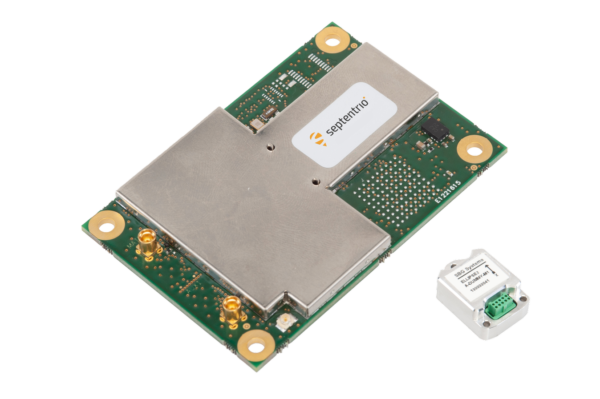
Septentrio launches its next-gen GNSS/INS product line: AsteRx-i3
By expanding their GNSS/INS (Inertial Navigation System) product family, Septentrio starts offering more application-specific positioning and orientation solutions
Septentrio, a provider in high-precision GNSS* positioning solutions, has announced the launch of a new product line of high-performance GNSS/INS receivers called AsteRx-i3. The AsteRx-i3 product family brings to market an array of next-generation receivers from plug-and-play navigation solutions to feature-rich receivers with raw measurement access. OEM boards are available for rapid integration as well as ruggedized receivers enclosed in a waterproof IP68 housing. Such product variety accommodates specific needs of various applications which require high accuracy positioning together with 3D orientation, heading, pitch, and roll angles.

Danilo Sabbatini
“Using our off-the-shelf GNSS/INS systems allows our customers to focus their efforts on core technology and to reduce their products’ time-to-market,” commented Danilo Sabbatini, Product Manager at Septentrio. “With this new generation of products, we aim to satisfy specific needs of various customers. Instead of releasing a single general-purpose product, we bring several dedicated solutions for fastest and easiest integration into systems that require robotic navigation or sensor fusion.”
 AsteRx-i3 Pro+ receivers support either single or dual antenna modes. The single antenna mode is ideal for compact and lightweight configurations. The dual antenna mode reduces the need for movement during IMU initialization, allowing fully informed navigation from the mission start.
AsteRx-i3 Pro+ receivers support either single or dual antenna modes. The single antenna mode is ideal for compact and lightweight configurations. The dual antenna mode reduces the need for movement during IMU initialization, allowing fully informed navigation from the mission start.
The AsteRx-i3 product line includes a total of 5 new GNSS/INS receivers. The Pro receivers offer high accuracy positioning with 3D orientation and dead-reckoning functionality for the fastest and easiest plug-and-play integrations. Meanwhile, the Pro+ is the most versatile receiver providing integrated positioning and orientation along with raw measurements, in single or dual antenna configurations, ideal for applications with sensor fusion. One of the receivers offers an off-board IMU sensor, which can be mounted exactly at the alignment point of interest.









